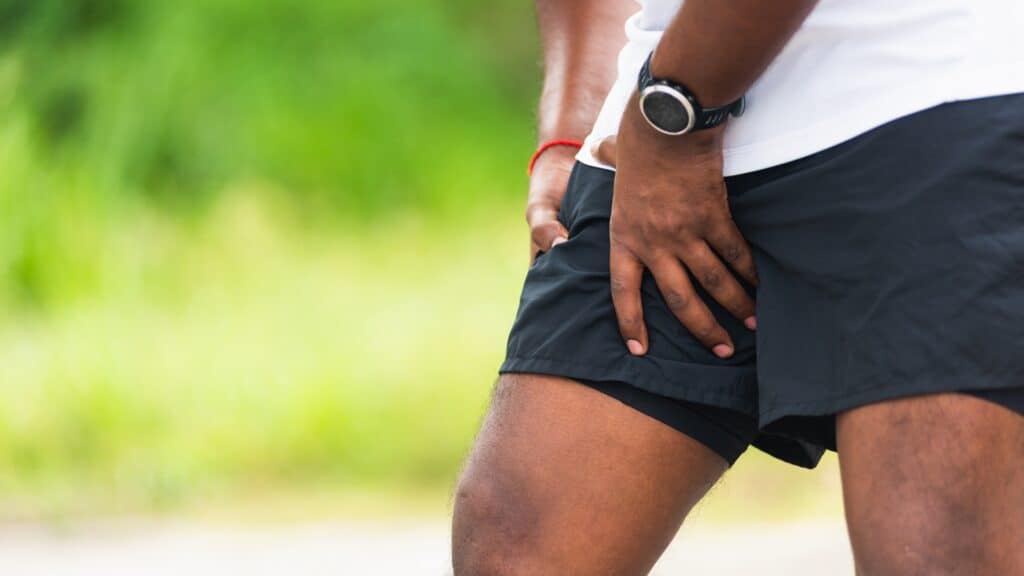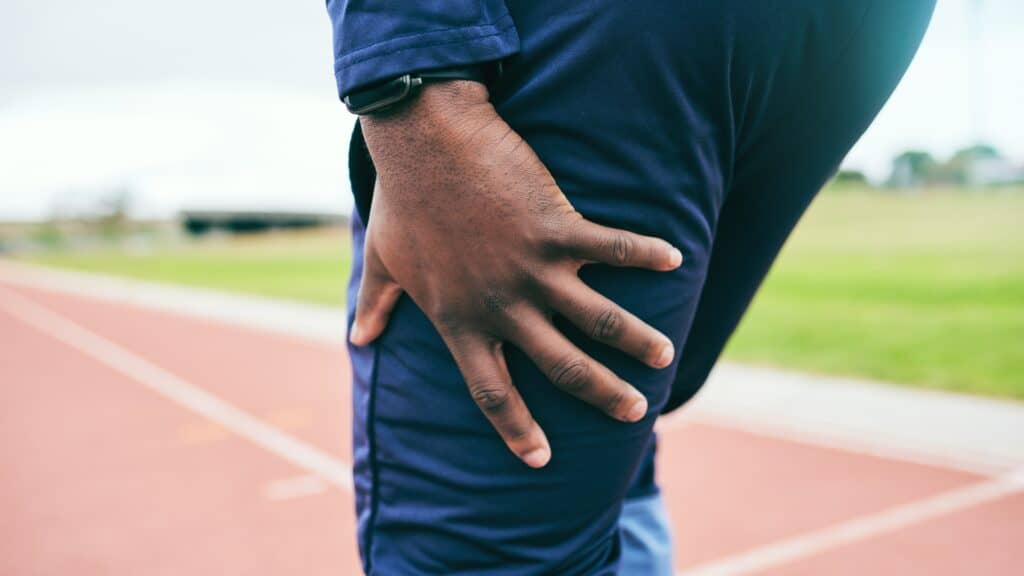Struggling with persistent groin discomfort during your runs?
Groin injuries can be complex, with various underlying factors contributing to the pain.
In this article, we shed light on the multitude of issues that can lead to groin injuries and offer valuable guidance on managing and preventing them.

Exploring the Causes of Groin Injuries
Groin injuries can result from a variety of factors, including tightness or weakness in the groin muscles themselves. Additionally, tight hamstrings may cause a pelvic tilt, exerting pressure on the hip flexors and adductors, further exacerbating groin pain.
Weakness in the glutes can also play a role, leading to a collapsing running stride that places undue stress on the groin area. Moreover, activities like jumping or overstriding and landing awkwardly can contribute to groin discomfort.

Assessing Groin Pain Severity
I advise against training through pain, especially with groin injuries. I rather suggest evaluating the level of pain while running, whether it compromises the running stride, and if it worsens during the run. If the answer is yes to all three questions, seeking treatment before resuming training is recommended.

Treatment and Prevention Strategies For Groin Pain While Running
Given the complexity of groin injuries, experts recommend consulting a physiotherapist for a thorough assessment and personalized treatment plan. Addressing underlying issues such as weak glutes or pelvic misalignments is crucial for preventing recurrent groin pain. Strengthening exercises targeting the glutes and addressing pelvic tilt or rotation can help alleviate discomfort and minimize the risk of future injuries.
Groin injuries can pose a significant challenge for runners, but understanding their root causes and implementing appropriate management strategies can make a world of difference.
Whether grappling with tightness, weakness, or biomechanical issues, seeking professional guidance and prioritizing proper treatment and prevention measures are essential steps toward a pain-free running experience. Remember, taking the time to address groin injuries promptly can ultimately lead to a stronger, more resilient stride.



Comments are closed.